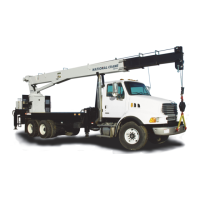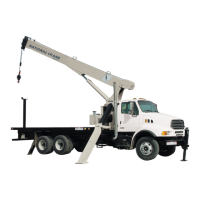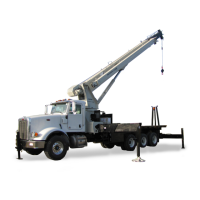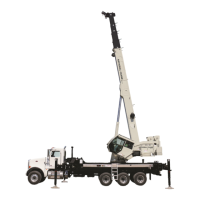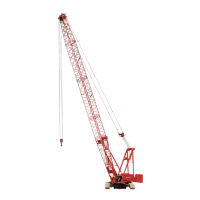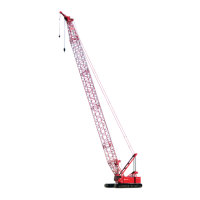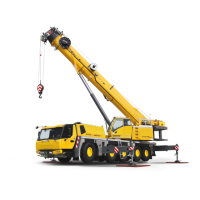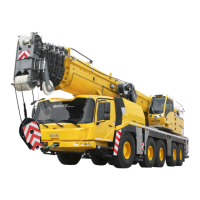National Crane Published 5-27-2018 Control # 039-06 5-7
800D SERVICE
The torque tables are provided by National Crane for
reference when performing maintenance.
Use of proper torque values is extremely important. Improper
torquing can seriously affect performance and reliability.
Identification of fastener grade/class is always necessary.
When marked as a high strength bolt (grade/class 5, 8, etc.),
the mechanic must be aware that he/she is working with a
highly stressed component and the fastener should be
torqued accordingly.
NOTE: Some special applications require variation from
standard torque values. Reference should always
be made to component overhaul procedures for
recommendations.
Special attention should be given to the existence of
lubricant, plating, or other factors that might require variation
from standard torque values.
The use of lubricants on zinc-flake coated parts shall be
prohibited since this will change the required torque value.
When maximum recommended torque values have been
exceeded, the fastener should be replaced.
Previously installed bolts and nuts of Grade 8 or Class 10.9
and higher may not be reused.
When referring to the applicable torque charts, use values as
close as possible to the torque values shown to allow for
wrench calibration tolerance.
Torque Wrenches
Flexible beam type wrenches, even though they might have
a pre-set feature, must be pulled at right angle and the force
must be applied at the center of the handle. Force value
readings must be made while the tool is in motion. Rigid
handle type, with torque limiting devices that can be pre-set
to required values, eliminate dial readings and provide more
reliable, less variable readings.
NOTE: If multipliers and/or special tools are used to reach
hard to get at areas, ensure torque readings are
accurate.
Torque wrenches are precision instruments and must be
handled with care. To ensure accuracy, calibrations must be
made on a scheduled basis. Whenever there is a possibility
that a torque wrench may have been either overstressed or
damaged, it should immediately be removed from service
until recalibrated. When using a torque wrench, any erratic or
jerking motion can result in the application of excessive or
improper torque. ALWAYS use a slow, even movement and
STOP when the predetermined value has been reached.
When using step wrenches, calculated wrench settings are
valid only when the following conditions are met:
• Torque wrenches must be those specified and forces
must be applied at the handle grip. The use of handle
extensions will change applied torque to the bolt.
• All handles must be parallel to the step wrench during
final tightening. Multiplier reaction bars may be
misaligned no more than 30 degrees without causing
serious error in torque.
• Multiplier bar handles must be propped or supported
within the outer 1/4 of the handle length, or serious
under or over tightening will occur.
To convert pounds-foot (lb-ft) of torque to newton meters
(Nm), multiply the pounds-foot quantity by 1.3558.
To convert pounds-inch (lb-in) of torque to newton meters
(Nm), multiply the pounds-inch quantity by 0.11298.
Torque Values
The following tables list the torque values for both ASME
standard and metric fasteners. The tables list the values for
grade 5 and grade 8 zinc-flake coated and stainless steel
fasteners.
Fo
r
Reference
Only
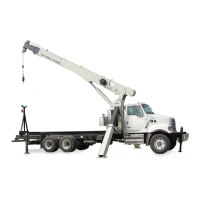
